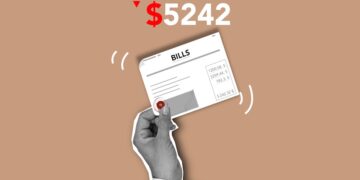Smart Saving: Comparing Top Digital Budgeting Tools
In today’s digital age, managing personal finances can be a breeze with the right tools at your disposal. From apps that automate savings to platforms that visualize spending habits, digital budgeting tools have transformed how we manage our money. In this article, we’ll compare some of the top digital budgeting tools available, offering insights into their features, costs, and user experiences to help you find the best fit for your financial management needs.
Why Use Digital Budgeting Tools?
Digital budgeting tools streamline the often cumbersome process of tracking incomes, expenses, and investments, making it easier to achieve financial goals such as saving for a house, paying off debt, or preparing for retirement. By providing clear insights and real-time updates, these tools help users avoid overspending and improve their financial health over time.
Top Digital Budgeting Tools in the Market
When choosing a digital budgeting tool, it’s important to consider factors such as ease of use, cost, security, and the specific financial management features that suit your unique situation. Below, we explore several leading options that are popular among users.
Mint
Features: Mint is one of the most popular free budgeting apps, known for its comprehensive approach to expense tracking and budget creation. It automatically categorizes transactions from linked credit and debit cards and provides customized tips for reducing fees and saving money.
User Experience: Mint’s intuitive dashboard and real-time updates on spending make it easy for users to stay on top of their finances. Alerts for unusual charges and reminders for bill payments further enhance its functionality.
Cost: Free
YNAB (You Need A Budget)
Features: YNAB’s philosophy is built around “giving every dollar a job,” which encourages active management of every dollar coming into and going out of your account. It’s particularly useful for individuals looking to get out of debt or those who want a more hands-on budgeting approach.
User Experience: YNAB offers extensive educational resources and a supportive community, making it ideal for users who are new to budgeting. However, it takes a bit more time to set up and maintain compared to some other tools.
Cost: $11.99/month or $84/year after a 34-day free trial
Personal Capital
Features: Best suited for investment tracking alongside regular budgeting, Personal Capital provides tools to monitor and optimize your investments. It’s a great pick for those who need a broader overview of their financial health rather than detailed daily budgeting.
User Experience: With tools like the Retirement Planner and Education Planner, users can manage their long-term financial strategies effectively. The interface is user-friendly, though the investment features can be overwhelming for beginners.
Cost: Free, with optional wealth management services that charge a fee based on assets managed
How to Choose the Right Tool for You
Selecting the right digital budgeting tool depends largely on your financial situation and goals. If you’re just starting out with budgeting, an app like Mint might be ideal. If you have intricate financial arrangements or are focused heavily on investing, Personal Capital could be better suited.
Consider the following factors when choosing:
- Ease of use: The interface should be intuitive and easy to navigate.
- Security: Strong security measures are crucial since sensitive financial information is involved.
- Cost: Determine if the benefits of a paid tool outweigh its costs based on your needs.
- Features: Make sure the tool meets all your budgeting needs, including tracking expenses, setting goals, and possibly managing investments.
Common Questions About Digital Budgeting Tools
Are digital budgeting tools safe to use?
Most reputable digital budgeting tools use encryption and multiple layers of security to protect user data. Always verify the security measures employed by the tool and read reviews from other users.
Can digital budgeting tools help save money?
Yes, by providing insights into your spending patterns and helping you set reasonable budgets based on your financial goals, these tools can be very effective in managing excess spending and saving more money.
Do I need to be tech-savvy to use these tools?
No, most modern budgeting tools are designed with a user-friendly interface that is suitable for beginners. Nonetheless, some tools do have a learning curve and may require a bit of initial setup time.
Conclusion
Whether you’re a seasoned saver or just starting out, digital budgeting tools can help streamline your financial management processes. By providing detailed insights and facilitating smarter money management practices, these tools play a crucial role in enhancing your financial well-being. Choose the right tool that fits your financial landscape, and take a significant step towards achieving your financial goals.
With this comprehensive guide, you are equipped to select a digital budgeting tool that best fits your personal finance needs, helping you manage your budget effectively and save smartly.

























































